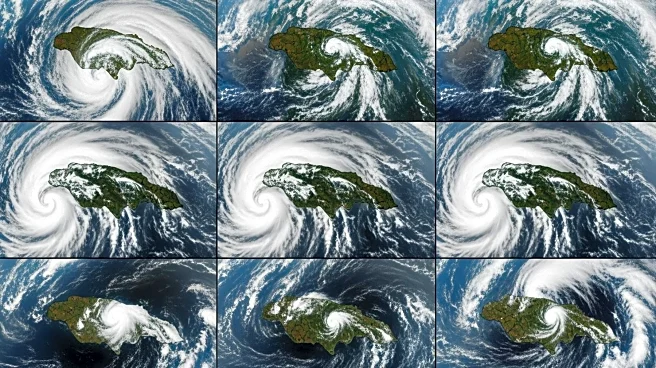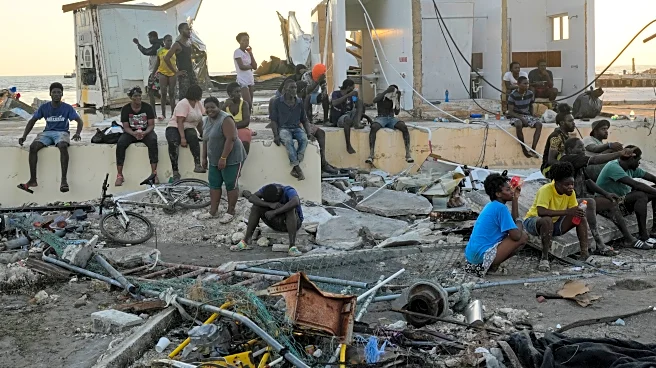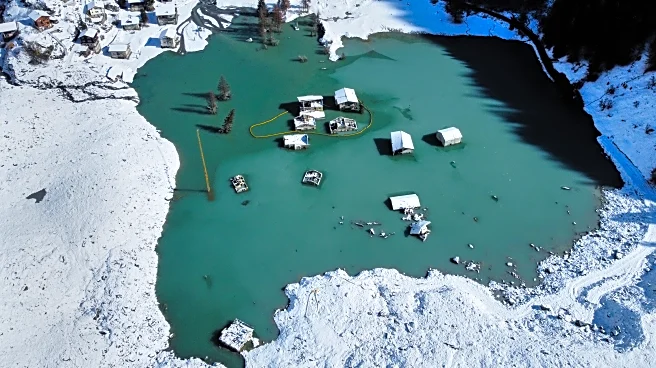What's Happening?
The Swiss village of Blatten, located in the Lötschental valley, was severely impacted by a landslide in May, which destroyed over 90% of its homes and buildings. The landslide, triggered by the collapse
of 9 million cubic meters of ice, stone, and earth from the Kleines Nesthorn peak, resulted in the death of a 64-year-old man and left the village covered in debris. Despite the destruction, the 300 residents of Blatten have decided to rebuild their community rather than abandon it. Temporary lodging has been arranged by local hoteliers in neighboring areas, and efforts are underway to clear debris and restore infrastructure. The residents are expected to return to their rebuilt homes by 2030.
Why It's Important?
The decision to rebuild Blatten highlights the resilience and determination of its residents in the face of natural disasters. This event underscores the broader challenges posed by climate change, as global warming is believed to contribute to the increased frequency and severity of such natural events. The rebuilding efforts in Blatten could serve as a model for other communities facing similar threats, emphasizing the importance of community solidarity and proactive planning in disaster recovery. The situation also raises awareness about the potential long-term impacts of climate change on small communities and the need for sustainable development practices.
What's Next?
The reconstruction of Blatten will involve several years of clearing debris and rebuilding infrastructure. Authorities and residents will need to address the ongoing risks posed by unstable rock and ice formations in the area, particularly as climate change continues to affect the region's geology. The community's efforts to rebuild may attract attention from environmental and governmental organizations, potentially leading to increased support and resources for similar initiatives. Additionally, the situation may prompt further discussions on climate change adaptation strategies and the need for comprehensive disaster preparedness plans.
Beyond the Headlines
The Blatten landslide serves as a poignant reminder of the tangible effects of climate change on local communities. It highlights the ethical responsibility of global stakeholders to address environmental issues and support vulnerable populations. The event also raises questions about the long-term viability of living in areas prone to natural disasters and the cultural significance of preserving such communities. As Blatten rebuilds, it may also become a symbol of hope and resilience, inspiring other communities to take proactive measures against the impacts of climate change.












